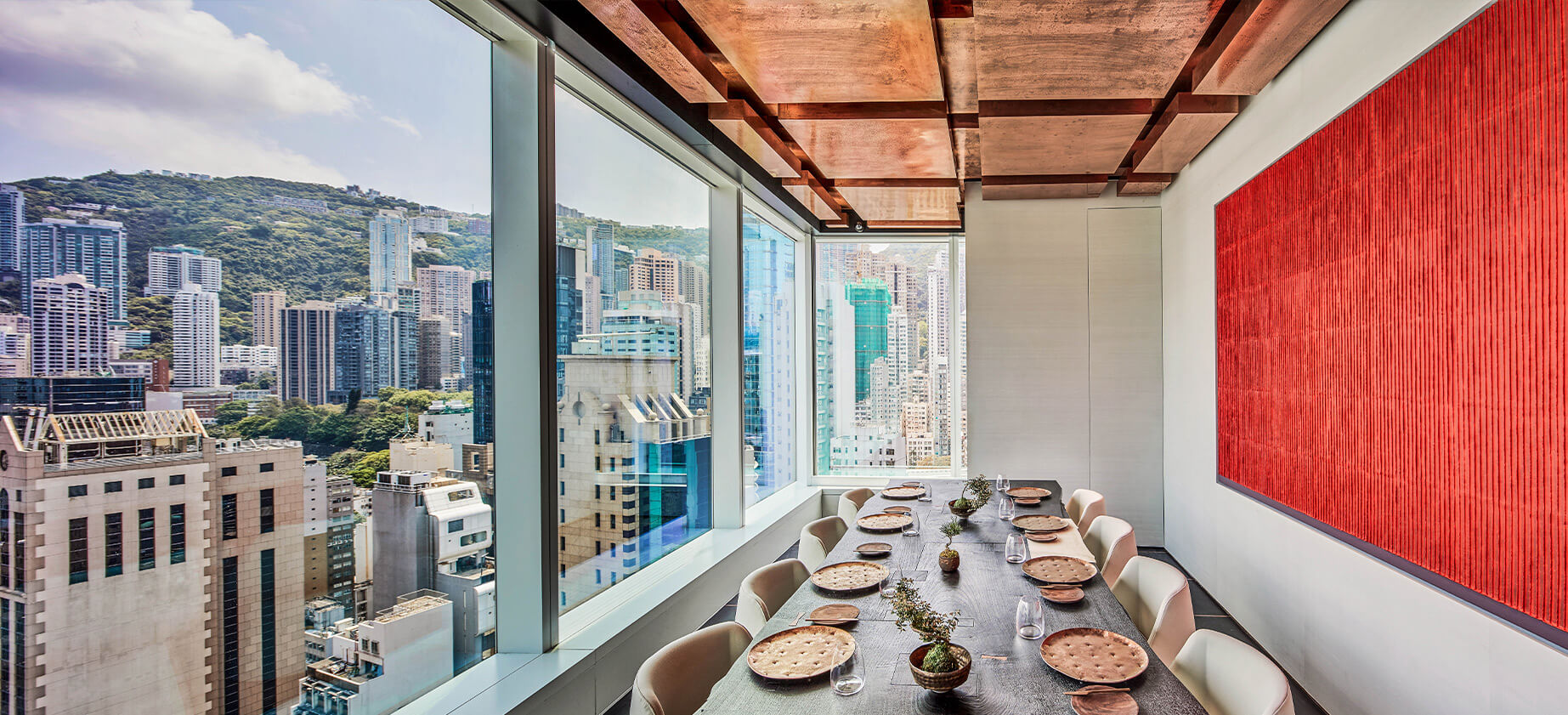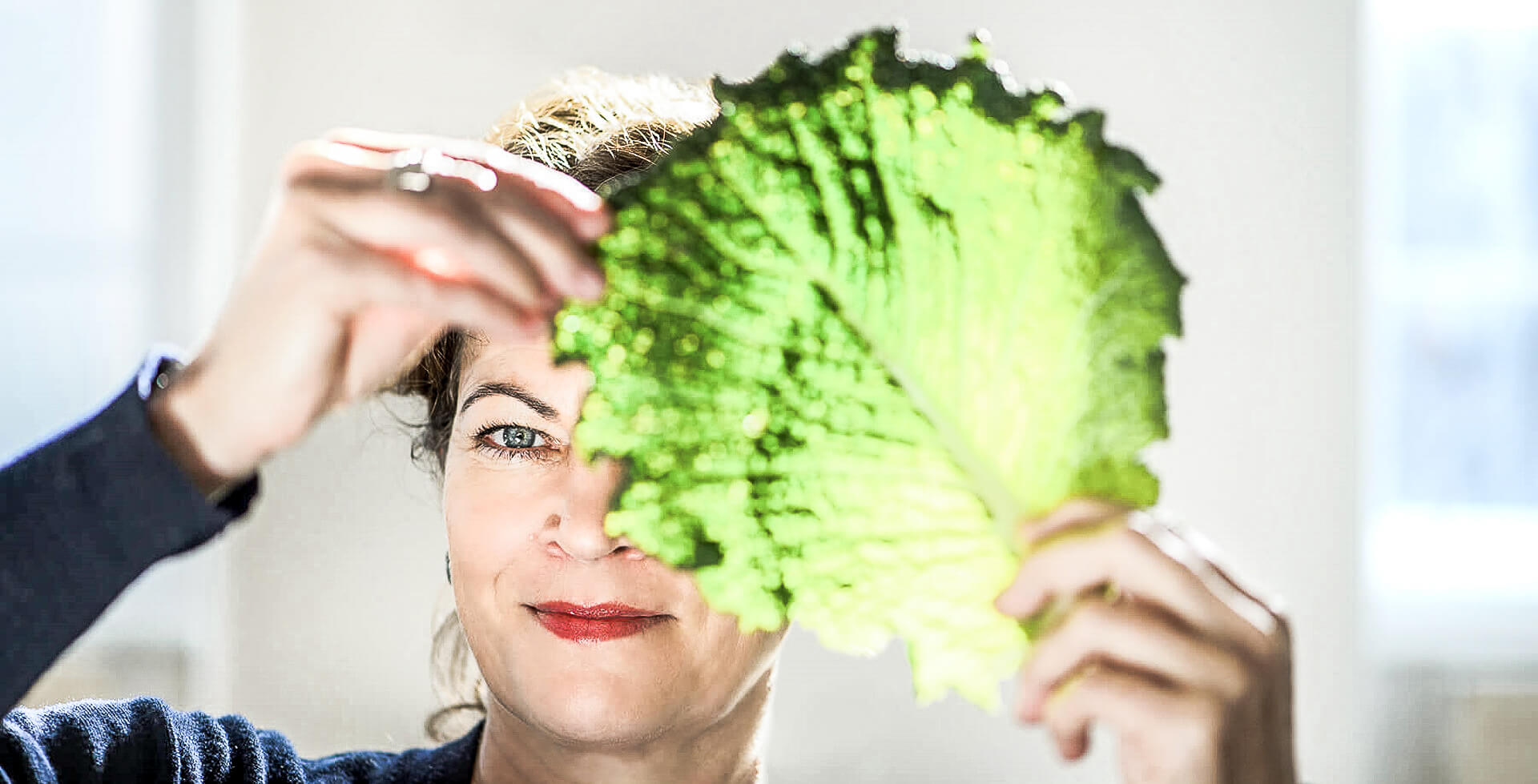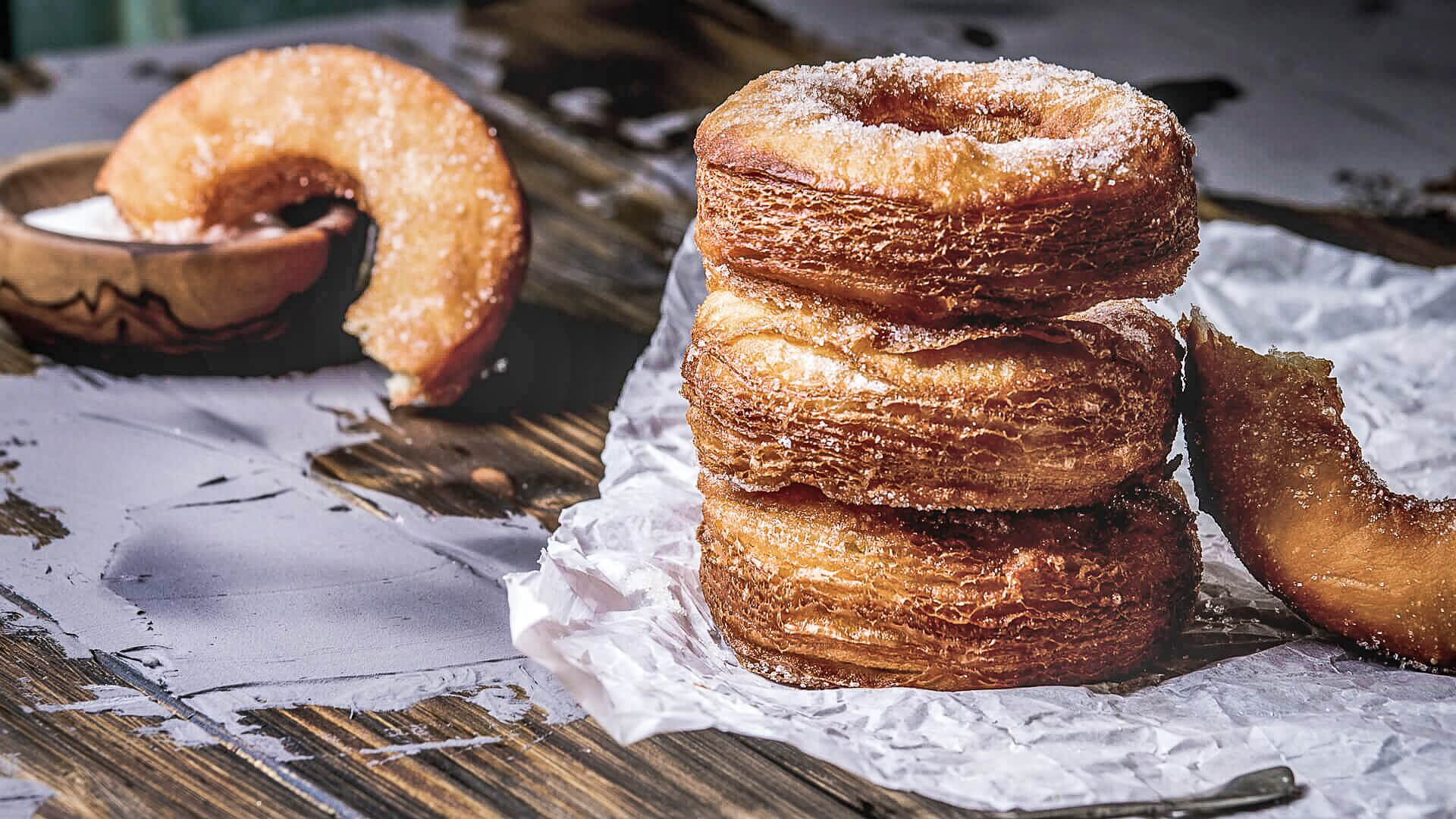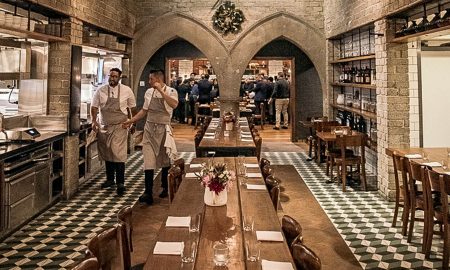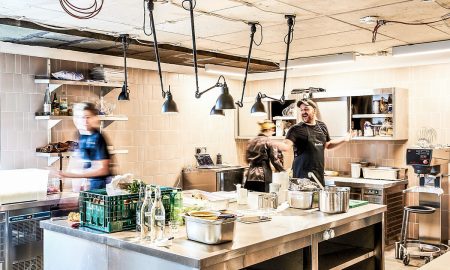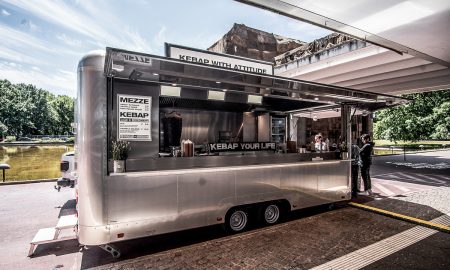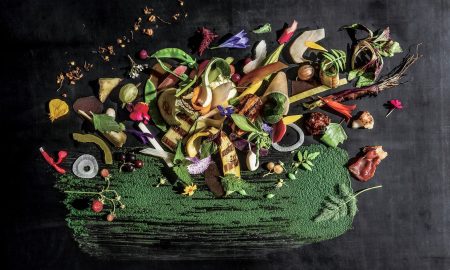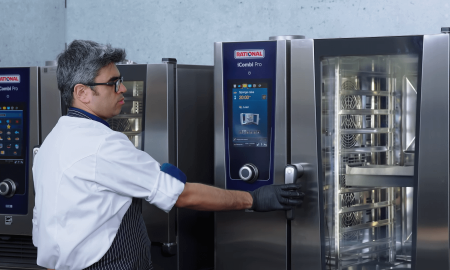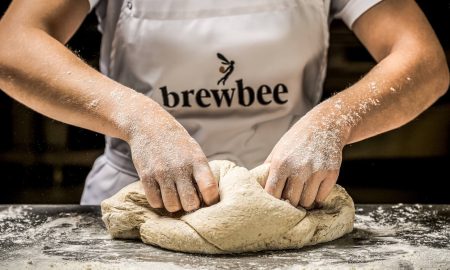“I don’t know any other place in the world where so much is happening in such a small amount of space,” raves Geoffrey Wu. He’s talking about what is officially known as the Hong Kong Special Administrative Region. And Mister Wu should know: His consulting firm counts among its clients some of the most dazzling and innovative restaurants in the South China Special Administrative Region. There are seven 3-star temples and a total of 63 star restaurants in vibrant Hong Kong, which is smaller in size than Manhattan in New York. Seven and a half million inhabitants from all over the world, most of whom have above-average financial means, create a demand here that is answered by (top) restaurants in the most innovative way possible. “From Chinese cuisine to Japanese, French, Italian, Vietnamese, Korean or South American, British or Spanish – Hong Kong has no culinary reservations or inhibitions,” as Wu knows. This is why it is hardly surprising that many world class chefs try their luck in this unique city. “Hong Kong is of course particularly appealing to them,” explains Wu. “But as attractive as this city is, they have to be aware that every venture here is very costly.” Hong Kong has already overtaken London in terms of commercial rent levels, making it the most expensive city in the world for renting business premises. Anyone wishing to purchase a property in Hong Kong – whether for business or pleasure – must expect an average price of $1.2 million. This is also the world’ s absolute top ranking. As an Asian financial metropolis, Hong Kong not only offers the right clientele for top gastronomy, it is also ideally located. It has almost become a tradition to import products from Japan and China, and also France, thanks to frequent flights. Practically everything is flown in. According to Wu, this is because the city’s infamous harbor, is “simply awful”. “No company purchases its goods there,” he explains. The fact that Hong Kong means “fragrant harbor” in Cantonese, by the way, suggests that this is probably an understatement. But we digress. So what exactly does Hong Kong have to offer gastronomically?
Kaiseki in Argentinian Spanish
This one is without a doubt an example of a restaurant that is the epitome of the culinary melting pot that is Hong Kong. Although it first opened in July 2017, Haku has already developed into one of Hong Kong’s most innovative and exciting fine dining destinations. No wonder, really when you know who is behind the concept, where Japanese product purism, virtuoso kitchen technology and a natural openness to other culinary traditions are taken to new heights. It is none other than the legendary kitchen samurai Hideaki Matsuo from the three-star Kashiwaya on the outskirts of Osaka, Japan, who serves as the patron saint to this new pilgrimage site. Interestingly, it is located on the Ocean Terminal, which is an incredible deck with a view of the harbor in the upscale Harbour City shopping mall. The second member of the team no longer needs to be introduced to connoisseurs. As Geoffrey Wu points out, Agustin Balbi is a chef with a “unique background”. As a child of Spanish parents growing up in Argentina, he first learned professional culinary basics in his home country at 15. After working in the US, he went to Japan for more than six years because he was interested in how fish is prepared. The overzealousness of this technical knife virtuoso soon bore its first fruits: Within a very short time he not only learned to speak Japanese – Balbi speaks the language fluently! – but also how to prepare fish in a unique way. The best chefs in the country took him under their wing. In the end, Balbi immersed himself so deeply in Japanese culinary culture that Matsuo appointed him head chef at Haku. “We make Japanese-Spanish fusion cuisine by creating modern Japanese food with Mediterranean influences,” said Balbi in May of this year at the main stage of CHEFDAYS Austria. “The concept of Haku,” explains Wu, “is based on Kaiseki, the light dishes traditionally served at Japanese tea ceremonies. Kaiseki cuisine is one of the most difficult type of cooking chefs in Japan do – and ultimately only very few master it. Having someone like Agustin Balbi bring his own personal interpretation of Kaiseki to Hong Kong is absolutely unique.”
The latecomers
The fact that Hong Kong’s gastronomy could not be more diverse in geographical terms does not make it immune to the number one industry characteristic. Even in this very vibrant special administrative zone, the gastronomic field is male-dominated. Hong Kong native Vicky Lau is one of the few women in her trade who have resolutely followed her path, although she entered the gastro business relatively late. A graphic designer by training who studied in New York and even worked for a while as a creative director for a design agency, Lau did not start her own restaurant, the Tate Dining Room, until 2012 when she was 31. Basically, the concept of this aesthetic temple is paying homage to the profound experience that the future kitchen virtuoso has brought behind the stove. In a period of soul searching, by pure chance she took a basic course at Le Cordon Bleu in Bangkok with two friends. That Lau caught the culinary bug is clear from the fact that she took the nine-month course at the renowned Grand Diplôme in Le Cordon Bleu Dusit. This was followed by one and a half years at Cépage, a restaurant in Hong Kong that has since closed. At Cépage, she worked under Sebastien Lepinoy, who today is well known as the head of Les Amis in Singapore, which ranks 29th on the list of Asia’s 50 Best Restaurants. The cuisine and concept that Vicky Lau created at Tate soon proved to be highly successful. Her French techniques combined with Japanese and Cantonese influences were worth a star in the Michelin Guide, which the restaurant won just one year after opening. Finally, in 2015, Lau received the prestigious Asia’s Best Female Chef Award at Asia’s 50 Best Restaurants. Acclaimed by Michelin to be an “eclectic mix”, the restaurant has been praised in the press not only for its purist flavor combinations but also for the aesthetic scope of Laus’ creations. In 2017 the Hong Kong luxury guide Hong Kong Tatler awarded the Tate with the award for Best Interior Design. The design, as well as the dishes, is minimalist and illustrates an impressive, personal concept without shying away from clearly feminine aesthetics.
The French, all the time, anywhere
To write about gastronomic Hong Kong without mentioning the French chefs who flock there in droves would not only be an editorial sacrilege, it would also disregard the gastronomic identity of this megacity. After all, as varied as the restaurants may be, French chefs and cuisine à la française are an integral part of Hong Kong’s gastronomic DNA.
“Like Balbi, he is one of the most promising chefs in Hong Kong,” says Wu about Maxime Gilbert of the two-star Écriture. The Frenchman who grew up in an artistic household began his career with none other than Yannick Alléno in the Alléno Paris au Pavillon Ledoyen. “I became Sous Chef there after three years,” Gilbert said in an interview with the Michelin Guide. “And two years later we got three stars.” His father worked in the cognac industry and had an affinity for Asia, especially Hong Kong. After working in Marrakech and Beijing, Gilbert moved to Hong Kong. As the chef of the two star restaurant Amber, he learned how a restaurant also works from an accounting point of view. “I didn’t know anything about numbers. But during the four years I spent at Amber I learned how to manage a restaurant. It was only thanks to this experience that I could become general manager of Écriture,” explains Gilbert. And what a general manager he is: Écriture opened in April last year and received two Michelin stars after only seven months. “What makes this restaurant so special,” explains Wu, “is Gilbert’s understanding of modern French cuisine paired with extremely high-quality Japanese products.” But anyone who reduces the Écriture concept to a random Japanese-French mishmash is mistaken. “Of course we use Japanese products,” explains Gilbert. “Still, I hate being called a “fusion restaurant”. We are very much a French restaurant.”
Perhaps that is what makes Hong Kong gastronomy so special: Rigid culinary traditions and identities are being shaken off and new concepts are emerging for which there are (still) no gastronomic drawers. Whether Japanese products prepared with French techniques or Spanish-Argentinean chefs reinventing Kaiseki in the Hong Kong melting pot – in contrast to the small surface area, the spirit of the cooking gods decked out in white here is obviously boundless.


